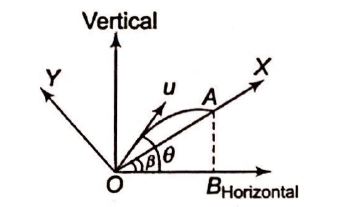Q. A plane surface is inclined making an angle $\beta$ above the horizon. A bullet is fired with the point of projection at the bottom of the inclined plane with a velocity $u$ ; then the maximum range is given by:
Motion in a Plane
Solution:
